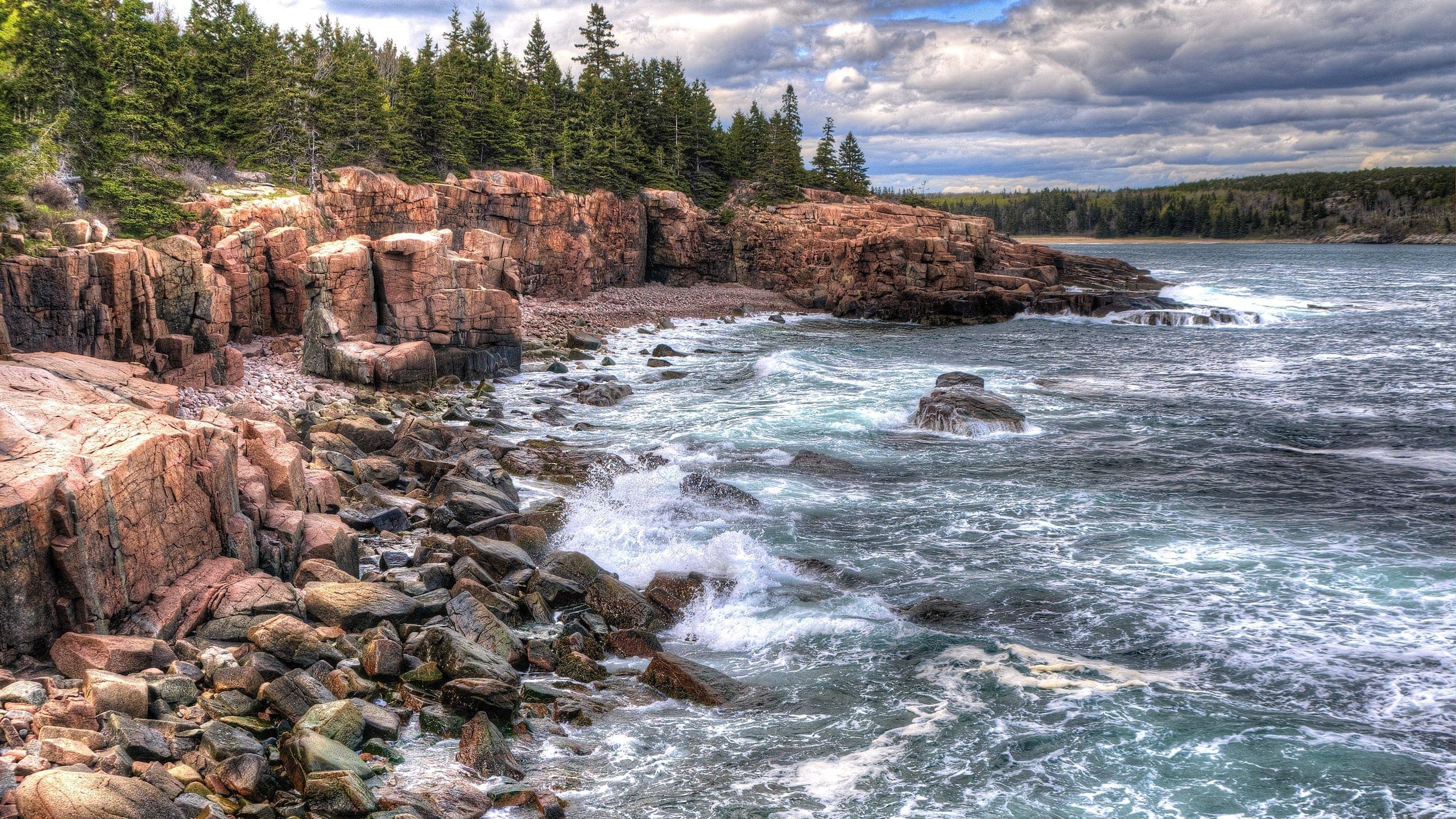About Acadia National Park
Acadia National Park preserves approximately 50,000 acres in Hancock and Knox Counties in the northeastern United States along the mid-section of the Maine coast. The park consists of portions of Mount Desert Island plus a portion of Isle au Haut to the southwest of Mount Desert Island, the tip of the Schoodic Peninsula on the mainland to the east, and most of or portions of 16 smaller outlying islands. The park also preserves more than 13,000 acres in conservation easements across its legislated boundary, which runs from the Penobscot River ship channel to just east of the Schoodic Peninsula.
The park was created to protect the natural beauty of the highest mountains and rocky headlands along the Atlantic shore of the United States. Significant resources include a glaciated coastal and island landscape, an abundance of habitats, a high level of biodiversity, clean air and water, and a rich cultural heritage. Acadia National Park was established in 1916 as Sieur de Monts National Monument and incorporated into Lafayette National Park in 1919 as the first national park east of the Mississippi River. Much of the land comprising the park was donated from private landowners; a practice that continued throughout much of the 20th century. Congress authorized the National Park Service to accept a donation of land on the Schoodic Peninsula in 1929 when the park’s current name was adopted. In 1986, Congress granted the National Park Service authority to exchange, or purchase from willing sellers, selected inholdings in an effort to remove private inholdings in the park; transfer ownership of selected noncontiguous parcels; establish a more permanent and contiguous park boundary; continue the authority to accept conservation easements to protect scenic, ecological, and cultural values; and establish a park advisory commission. The park advisory commission was reauthorized for an additional 20 years in 2006.
Acadia National Park is in a transition zone between temperate deciduous and northern coniferous forests along the Gulf of Maine and Atlantic flyway, overlying glacially sculpted granite mountains with interspersed glacially scoured lake beds and bounded by rocky headlands. Noteworthy natural resources include both coniferous and deciduous coastal spruce-fir forest, subalpine communities, heaths and marshes, an exceptionally diverse flora, over 40 species of mammals, and documented sightings of over 300 bird species. The land forms of the park illustrate the dynamics of many geologic processes including all three rock types, plate tectonics, volcanism, glaciations, and shoreline erosion. The power of glaciers is evident in U-shaped valleys and cliffs, while the ongoing assault by the sea constantly reworks the island’s shoreline.
The cultural resources of Acadia National Park document human activities that span 5,000 years. Acadia’s human history begins with centuries of use by native people known as the Wabanaki. Five centuries ago Europeans began making contact with these people as they explored and settled here. Decades of commercial use by stonecutters, lumbermen, shipbuilders, and fishermen, as well as an evolving and growing northeast interest in tourism, fostered an increased interest in conservation. Other historic resources protected within the boundary of Acadia include 33 miles of scenic motor roads, 120 miles of hiking trails, 45 miles of carriage roads, a hiking trail system noted for its community origins and high level of craftsmanship, four lighthouses, and the Islesford Historical Museum.
Acadia National Park receives an average of 2.5 million visits per year, with most occurring from June through October. The most popular destinations include Cadillac Mountain, Sand Beach, and Jordan Pond. Resource-based recreational activities include viewing the scenery, hiking, bicycling, camping, horseback and carriage riding, sea kayaking, and canoeing. The park provides opportunities for educating visitors about its resources and values through a variety of interpretive activities including guided walks, amphitheater presentations, education programs, and outreach activities.
Source: Foundation Document – Acadia National Park
Fast Facts:
| Date the Park was Established: | February 26, 1919 |
| Park Area (as of 2019): | 49,076.63 acres (198.6 km2) |
| Recreational Visitors (2018 Total): | 3,537,575 visitors |


